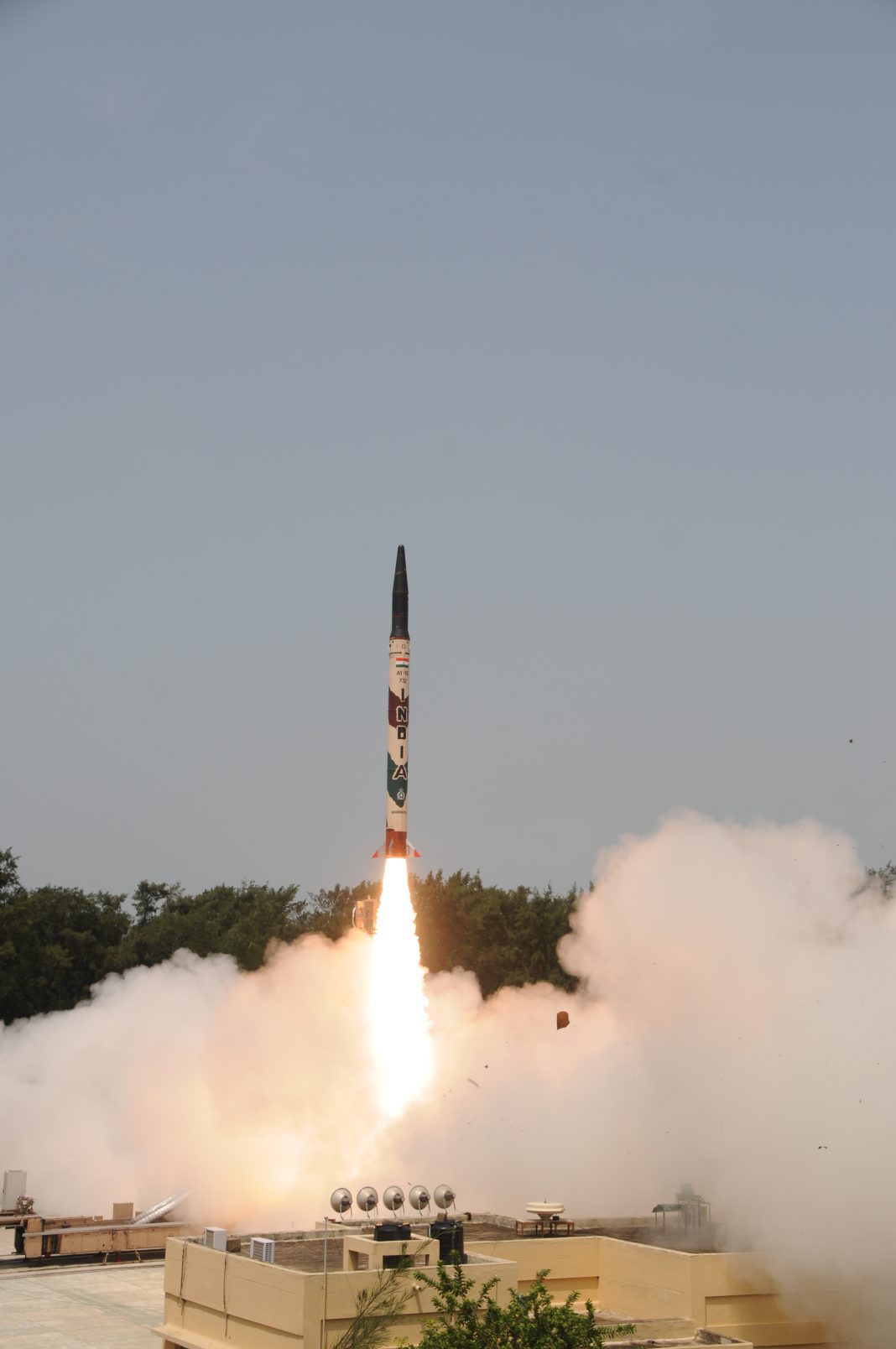Earlier today, at around 0830 hrs, India’s Strategic Forces Command (SFC) carried out a user training exercise for the nuclear capable Agni-1 short range ballistic missile (SRBM) developed by the Defence Research and Development Organization (DRDO). As part of this training exercise, an Agni-I was launched from Launch Pad-4 of the Integrated Test Range (ITR) at Abdul Kalam Island, off the coast of Balasore, in the state of Odisha.
This was the 18th successful test of the Agni-I, taking into account all launches related to development, induction and user training ever made, once again underlying the reliability of this missile, which has been a part of India’s nuclear delivery arsenal since 2004, and is operated by an Army missile group of the SFC. Agni-I is a solid-fuelled missile with a booster diameter of 1.0 metre (m), a length of 15 m and a launch weight of 12 tonnes. It can deliver a nuclear payload weighing a tonne, up to 900 kilometres (km) away. Its motor casing is made of low-carbon steel and it uses an AP/AL/HTPB composite solid propellant. Being a legacy system, its inertial navigation system uses a mechanical gyroscope. A deep modernization of the Agni-I, called the Agni-IP (‘P’ for prime) is in the works. Agni-I is, of course, road-mobile.
And here is file footage of a previous Agni-I launch.
Featured Image: File photo of an Agni-I launch from 2012. Courtesy: Ministry of Defence, India
© Delhi Defence Review. Reproducing this content in full without permission is prohibited.
































